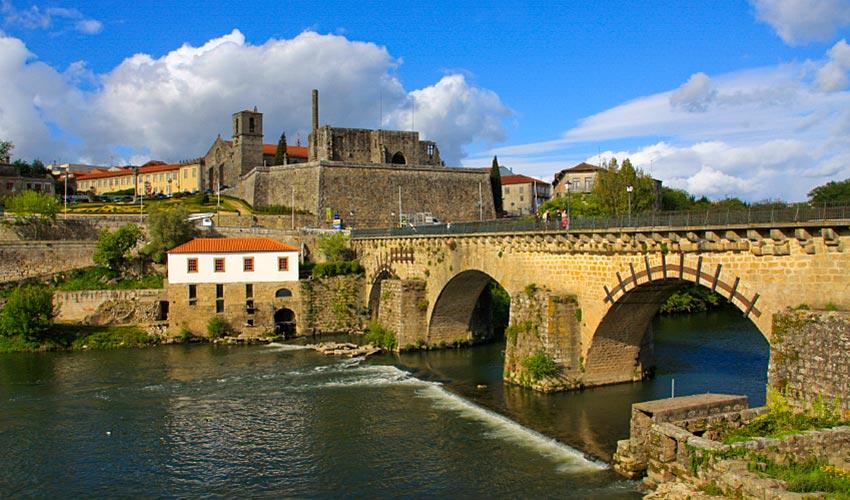Situated north of Porto, the city of Barcelos is known for its handmade ceramics, especially the Galo de Barcelos – a colourful cockerel which is acknowledged as an unofficial national icon and often used as a symbol of Portugal. The medieval walled town is situated on a hill above the Cavado river, its charming streets lined with baroque houses.
Every Thursday, the local market in Campo da República attracts tourists and visitors from all over the region. Feira de Barcelos is a decidedly rural affair, with stalls offering seasonal fruit and vegetables, homemade cheeses and beautiful ceramics, as well as all kinds of handicrafts featuring the trademark Barcelos cockerel.
Other local attractions include the Nossa Senhora do Terço church, the Centro do Artesanato de Barcelos (handicrafts centre) and the ruins of the 15th century Paço dos Duques de Bragança (Palace of the Dukes of Bragança), which have been transformed into an open-air archaeological museum. This site also features a cross which describes the story of Galo de Barcelos.
The legend of Galo de Barcelos
According to the legend, a crime was committed in Barcelos and the local inhabitants were worried because the culprit had not been found. One day, a Galician pilgrim arrived in the village and, because he was a stranger in these parts, he became a suspect. The authorities decided to arrest him, even though he protested his innocence. No one believed that this stranger was on his way to the medieval pilgrimage route of Santiago de Compostela.
The pilgrim was sentenced to hang at the gallows. Before his execution, the Galician asked to see the judge who had found him guilty. When they arrived at the judge’s house, he was having a banquet with his friends. The pilgrim again protested his innocence and, to everyone’s disbelief, pointed at the roasted cockerel on the table and said: ‘If I am innocent, this cockerel will crow three times.’
Remarkably, what seemed impossible came true! When the pilgrim was about to be hanged, the cockerel stood up and crowed three times. The judge was so astonished by this miracle that he released the pilgrim. After a few years, the pilgrim returned to Barcelos and built a monument in devotion to the Virgin Mary and St James.
Since then, brightly painted ceramic cockerels have been sold throughout Portugal as a symbol of good luck.

 English
English  Português
Português  Deutsch
Deutsch 


